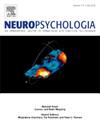快速眼动睡眠中的眼动在夜间情绪处理中起作用吗?
IF 2
3区 心理学
Q3 BEHAVIORAL SCIENCES
引用次数: 0
摘要
眼动(em)是快速眼动(REM)睡眠的一个决定性特征,但我们仍然不清楚为什么会发生眼动。一些假说试图解释可能的潜在机制。然而,对它们的功能意义仍然缺乏明确的认识。有趣的是,眼动脱敏和再加工(EMDR)疗法中有一个EM成分,被批准用于治疗创伤后应激障碍(PTSD)。EMDR的开发者弗朗辛·夏皮罗(Francine Shapiro)将这项技术描述为REM的模仿。罗伯特·斯蒂克高德(Robert Stickgold)在此基础上提出了一个假定的神经生物学模型,其中EMDR中重复的眼球运动启动了脑干类似REM的机制。在本文中,我们将Stickgold的模型与一项研究结果结合起来,该研究表明,交替的双侧视觉刺激使小鼠上丘(SC)和丘脑中背侧(MD)的活动持续增加,从而抑制了基底外侧杏仁核的活动。我们提出了一个假设问题:REM睡眠期间的em是否会通过SC-MD通路类似地抑制杏仁核活动?这可能是快速眼动睡眠的情感调节机制的一部分吗?本文章由计算机程序翻译,如有差异,请以英文原文为准。
Do eye movements in REM sleep play a role in overnight emotional processing?
Eye movements (EMs) are a defining feature of rapid eye movement (REM) sleep, yet we are still not clear why they happen. A few hypotheses attempt to explain the possible underlying mechanisms. However, a clear understanding of their functional significance remains lacking. Interestingly, there is an EM component in Eye Movement Desensitization and Reprocessing (EMDR) therapy, that is approved for post-traumatic stress disorder (PTSD). The developer of EMDR, Francine Shapiro described the technique as mimicry of REM. Robert Stickgold built on this by proposing a putative neurobiological model in which the repeated eye movements in EMDR initiate brainstem REM-like mechanisms. In this article, we combine Stickgold's model with the results of a study which showed that alternating bilateral visual stimulation in mice yielded sustained increases in the activities of the Superior Colliculus (SC) and mediodorsal thalamus (MD) which suppressed the activity of basolateral amygdala. We pose a hypothetical question: could EMs during REM sleep similarly inhibit amygdala activity through the SC-MD pathway? And could this be part of the affective modulation mechanisms characteristic of REM sleep?
求助全文
通过发布文献求助,成功后即可免费获取论文全文。
去求助
来源期刊

Neuropsychologia
医学-行为科学
CiteScore
5.10
自引率
3.80%
发文量
228
审稿时长
4 months
期刊介绍:
Neuropsychologia is an international interdisciplinary journal devoted to experimental and theoretical contributions that advance understanding of human cognition and behavior from a neuroscience perspective. The journal will consider for publication studies that link brain function with cognitive processes, including attention and awareness, action and motor control, executive functions and cognitive control, memory, language, and emotion and social cognition.
 求助内容:
求助内容: 应助结果提醒方式:
应助结果提醒方式:


